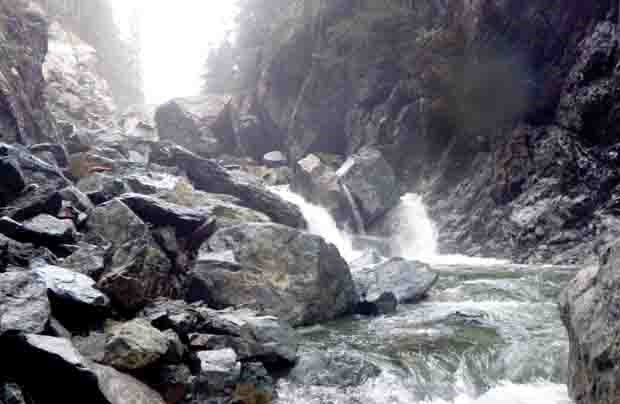December’s massive rock slide that temporary blocked the Seymour River and created a new body of water may be posing a serious threat to the river as spawning habitat for salmon and steelhead trout.
The slide dumped 50,000 cubic metres of rock into the river about one kilometre north of Riverside Drive, which has resulted in a series of new waterfalls.
Fisheries biologists from the Ministry of Forests, Lands, and Natural Resource Operations have begun radio-tagging winter steelhead in hopes of finding out whether they can make their way up the river to spawn.
“As of this point there is no movement upstream but that’s probably due to the low flows we’ve experienced lately,” said Kenji Miyazaki, fisheries biologist with the ministry.
Staff are planning to tag more of the fish in May and June to see whether they can reach the spawning ground as the flow rate changes.
As for what happens if they can’t get through, those plans are still in development, Miyazaki said.
“Trap-and-truck is an option. It’s been utilized in other parts of the province for moving fish above waterfalls and slides in the past,” he said. “It is a difficult place to work in compared to other sites I’ve worked at.”
Typically, biologists would expect to see about 100 summertime steelheads make it up the river to spawn and 150 in the winter.
“It’s definitely a depressed stock. It’s seen hardships over time and this is just another thing that’s piled onto them. The Seymour definitely does see some angling pressure. It is a hatchery system but it’s still in a state or restoration or repair,” Miyazaki said. “We put a lot of effort into trying to get the steelhead as healthy as we can but the slide has definitely put a wrench in our plans.”
Fisheries and Oceans Canada will be running its own studies to see how salmon fare on the stopped-up waterway.
Metro Vancouver, meanwhile, is moving on from the emergency steps taken to keep the area safe post-slide and is now trying to figure out what will happen with the trails in the area.
“Fortunately for all of us, where the rock slide came down has been determined to be stable and so that’s good news. The fact of the matter is though, in behind, the water level has gone up by a factor of three to four metres. It’s not the same water body it was before,” said Bob Cavil, Metro Vancouver’s watershed manager.
Much of the Fisherman’s Trail in the area around the former Twin Bridges is still underwater and will likely not be reopened, Cavil said.
Tempting as it might be when the weather warms up, Cavil said no one should attempt to go swimming near the site of the slide.
“There are dangers. It’s now a slow moving piece of water but it turns immediately to a cascading torrent,” he said. “It would not be wise to go swimming in there.”



